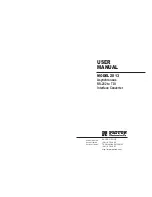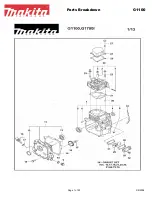
SP LINK | Using SP LINK
Doc #OI0003 Part #004122 Rev 04 2010
|
69
THE PRIMARY SOURCE
window reflects the allowable variation to the nominal
AC voltage and frequency we programmed back in the beginning. In that section
we used Australia as an example and used 240 volts and 50 Hz as our standard.
In this window we can specify the range of voltages and frequency – both higher
and lower than the nominal – that we will allow the inverter to work with. Lets
assume we insert 10 (10%) into each setting in this window. In that case the input
voltage could range between 216 and 264 volts and still be acceptable; while the
frequency of the input could be as high as 55Hz and as low as 45Hz.
These limits are important as higher voltages may shorten the life of lights and
other appliances; while low voltage and frequency may overheat or overstress
motors etc. The settings should not be made too tight or they will exclude the
normal variation most generators exhibit.
ALTERNATE AC SOURCE POWER
sets an upper limit on how much power the
inverter will try to draw from a second generator or the mains grid, limiting the
stress on the generator or the mains wiring. The choice of the second generator
power level is controlled from a digital input.
ExTERN. CONTACTOR/CT
can be enabled when you decide to use an external
AC contactor and current transformer to allow you to use a larger generator or
draw more power from the grid than the standard inverter wiring will allow. The
current rating of the external current transformer is entered in External CT.
THE ALTERNATE AC SOURCE
also provides for a separate allowable variation
to the nominal AC voltage and frequency. This allows for different limits to be
programmed for say the generator feeding in normally but when connected into
the marina on the Grid different limits can be used.
















































